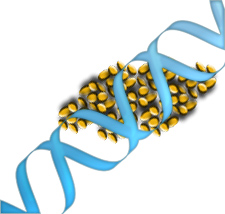Archival Notice
This is an archive page that is no longer being updated. It may contain outdated information and links may no longer function as originally intended.
Home | Glossary | Resources | Help | Contact Us | Course Map
Generally, sexual assault evidence is a mixture of epithelial cells and semen. One of the FBI's Quality Assurance Standards requires the laboratory to have a procedure for the differential extraction of stains that contain semen. Some laboratories have adopted a Chelex differential extraction procedure for these sample types. 09
Proteinase K, mentioned in the non-differential procedure, lyses epithelial and white blood cells but not sperm cells under the extraction conditions. It is particularly useful in organic extraction procedures as it maintains activity in the presence of denaturing agents such as sodium dodecyl sulfate (SDS), a component of extraction or digest buffers. Similarly, Proteinase K is not inactivated by metal chelating agents.
Read more about Organic Extraction in this course.
After extracting the sample in digest buffer and Proteinase K, the sample is centrifuged. The supernatant contains DNA from the lysed epithelial and white blood cells. The supernatant containing the cell lysate is subjected to extraction using 5% Chelex® 100. This fraction is treated as a single sample and referred to as the epithelial cell fraction, or the non-sperm fraction, depending upon laboratory procedures.
Sperm DNA is wound around proteins called protamines, which are analogous to histones. Protamines contain a high concentration of cysteine residues and disulfide bonds, making the sperm head and its DNA more resistant to the effects of Proteinase K. The pellet from the original extraction contains the sperm components from the sample and is subjected to a second incubation in buffer containing Proteinase K and dithiothreitol (DTT). This fraction is treated as a second sample referred to as the sperm fraction. DTT prevents oxidation of thiol (SH) groups and reduces disulfides to dithiols.
Additional Online Courses
- What Every First Responding Officer Should Know About DNA Evidence
- Collecting DNA Evidence at Property Crime Scenes
- DNA – A Prosecutor’s Practice Notebook
- Crime Scene and DNA Basics
- Laboratory Safety Programs
- DNA Amplification
- Population Genetics and Statistics
- Non-STR DNA Markers: SNPs, Y-STRs, LCN and mtDNA
- Firearms Examiner Training
- Forensic DNA Education for Law Enforcement Decisionmakers
- What Every Investigator and Evidence Technician Should Know About DNA Evidence
- Principles of Forensic DNA for Officers of the Court
- Law 101: Legal Guide for the Forensic Expert
- Laboratory Orientation and Testing of Body Fluids and Tissues
- DNA Extraction and Quantitation
- STR Data Analysis and Interpretation
- Communication Skills, Report Writing, and Courtroom Testimony
- Español for Law Enforcement
- Amplified DNA Product Separation for Forensic Analysts


